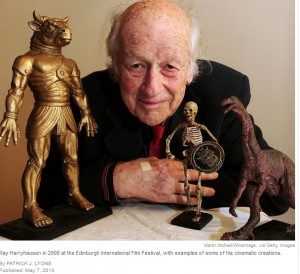Dear Commons Community,
Joe Bruni’s column in the New York Times today focuses on the ever running circus that has become our federal government. A government more concerned with political theater than solving the nation’s problems. Here is an excerpt:
“Four Americans died in Benghazi, Libya: people with unrealized hopes, unfinished plans, relatives who loved them and friends who will miss them.
But let’s focus on what really matters about the attack and its aftermath. Did Hillary Clinton’s presumed 2016 presidential campaign take a hit?
We live in a country lousy with guns and bloody with gun-related violence, manifest two weeks ago in a Kentucky 5-year-old’s fatal shooting of his 2-year-old sister, evident over the weekend in a hail of bullets at a Mother’s Day parade in New Orleans.
But let’s cut to the chase. Did Kelly Ayotte, the New Hampshire senator, safeguard or endanger her political future by casting one of the votes that doomed gun-control legislation in the Senate? An d does the law’s failure mean that it’s time to write the obituary for Barack Obama’s presidency, which has more than 1,300 days to go, or can we wait — I don’t know — a week or maybe even two to do that?
Now we have a scandal at the Internal Revenue Service to factor in. And a scandal it is, in urgent need of a thorough investigation, which President Obama pledged at his news conference on Monday and which we’re very much owed.
But before we get a full account, let’s by all means pivot to the possible political fallout, politics being all that seems to matter these days. Will Republicans ever trust and be able to work with the administration again? (This is being asked as if there were all that much trust and cooperation in the first place.) Have they finally been handed the cudgel that can whack Obama and his crew into oblivion? Assess, discuss and please don’t forget to make predictions about the 2014 midterms.
It never gets better and may in fact be getting worse: the translation of all of the news and of all of Washington’s responses into a ledger of electoral pluses and minuses, a graph of rising and falling political fortunes, a narrative of competition between not just the parties but the would-be potentates within a party. On issue after issue, the sideshow swallows the substance, as politicians and the seemingly infinite ranks of political handlers join us journalists in gaming everything out, ad infinitum.
To follow the debate over immigration reform is to lose sight at times of the 11 million undocumented immigrants in limbo and the challenge of finding the most economically fruitful and morally sound way to deal with them and their successors. No, the real stakes are United States Senator Marco Rubio’s presidential aspirations. Will he pay a high price with the Republican base for pushing a path to citizenship? Or will he earn necessary centrist credentials?
And where does it leave him vis-à-vis Rand Paul and Ted Cruz, who are fellow Republican senators itching for prominence and are also hypothetical primary rivals? The next presidential election is three and a half years away — an eternity, really — but instead of putting a damper on speculation, that time span has encouraged it, letting a thousand theories and nearly as many contenders bloom.
We can wonder: if Clinton decided not to run, would a door open for another woman, Senator Kirsten Gillibrand of the New York? Just how well has Gillibrand positioned herself for such a turn? That story is already out there, and in it her record is framed largely in terms of her prospects for national office, as if one exists in the service of the other, as if the point of a Congressional seat is leveraging it into an even better, more regal throne.
What about the actual business of governing? Between all the preening, partisan cross-fire and of course fund-raising that consumes members of Congress, is there any space and energy for that?
Not much, to judge from either the sclerosis that now defines the institution or the obsessions of those of us in the media. Our quickness to publicize skirmishes and divine political jockeying abet both. Actors tend to do whatever keeps the audience rapt.”
How is it that our elected officials can exhaust themselves to appeal to voters and win election points while accomplishing so little to improve the country and the lives of people. It is reminiscent of the last two years of Bill Clinton’s presidency when the entire government apparatus shut down to concentrate on what he did or did not do with Monica Lewinsky.
Tony




